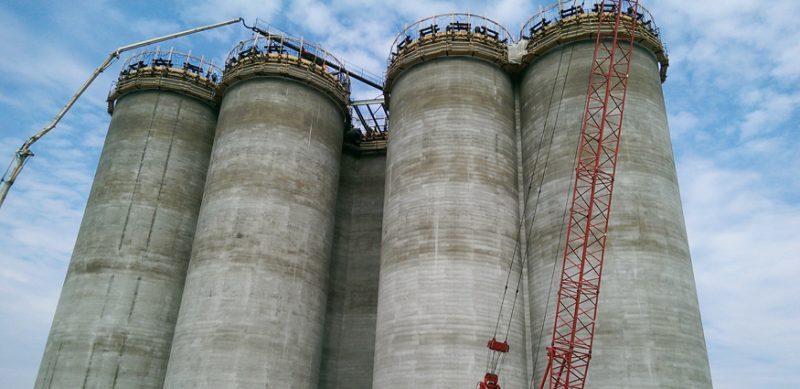Slip forming is a construction technique use for tall structures, such as cement silos. In slip forming, a formwork is continuously rais vertically, while fresh concrete pours into the formwork from the top. As the formwork is rais, the concrete sets and hardens, creating a continuous, seamless structure.
To use slip forming for a cement silo, the process typically involves the following steps:
Construct a circular formwork at the base of the silo to the desired diameter.
Pour a shallow concrete foundation inside the formwork to provide stability.
Begin pouring fresh concrete into the formwork from the top. The concrete usually delivers by truck and pumped into the formwork.
As the concrete sets and hardens, the formwork is gradually raised using hydraulic jacks or other lifting equipment.
The process of pouring and raising the formwork repeats until the desired height of the silo is reach.
Once the concrete has fully set and the formwork has been remov. The silo finishes with any necessary accessories, such as ladder rungs, platforms, or access doors.
There are several advantages to using slip forming for a cement silo. One of the main benefits is that it allows for the construction of very tall. Slender structures with a small footprint. Slip forming also produces a seamless, monolithic structure with minimal joints or seams, which reduces the risk of cracking and leaks. In addition, slip forming is a relatively fast construction method, which can save time and money compared to other construction techniques.
However, there are also some challenges and considerations to keep in mind when using slip forming for a cement silo. One of the main challenges is ensuring that the concrete sets and hardens at the correct rate. If the concrete sets too quickly, it can create stresses and cracks in the structure. On the other hand, if the concrete sets too slowly, it can delay the construction process and increase costs. Therefore, it is important to carefully control the mixture and placement of the concrete to ensure that it sets at the appropriate rate.
Another consideration when using slip forming for a cement silo is the need for adequate lifting equipment. The formwork and concrete can be very heavy, so it is important to use appropriate lifting equipment, such as hydraulic jacks or cranes, to raise the formwork safely and efficiently.
In addition, slip forming requires skilled workers who experience in concrete placement and formwork construction. These workers must be able to carefully control the pouring of the concrete and the raising of the formwork to ensure that the structure is built to the correct specifications and meets all necessary safety standards.
Overall, slip forming can be an effective construction technique for building cement silos. By carefully controlling the concrete placement and raising the formwork in a controlled manner, it is possible to create a tall, slender structure with minimal joints and seams. However, it is important to carefully consider the challenges and requirements of slip forming before deciding whether to use this technique for a particular project.

